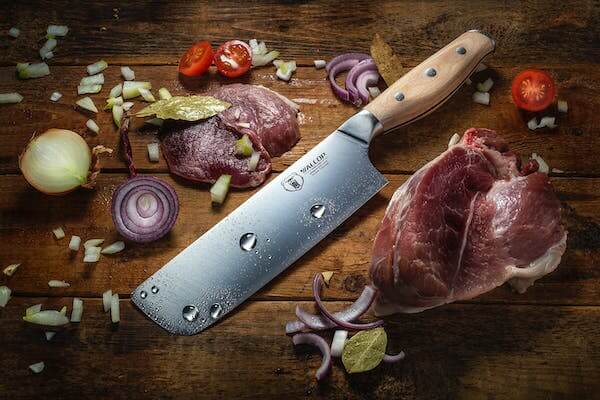The Nakiri and Chinese cleaver are two types of knives that people commonly use in kitchens, but they differ in terms of their design and functionality. So, Japanese Nakiri and Chinese Cleaver: which should you choose?
While both Nakiri and Chinese cleaver are excellent for meal preparation, they have different strengths and weaknesses. It is essential to consider your specific needs and preferences when choosing between these two types of knives.
This post will give you the comparison between a Nakiri and a Chinese cleaver.
What is a Nakiri?
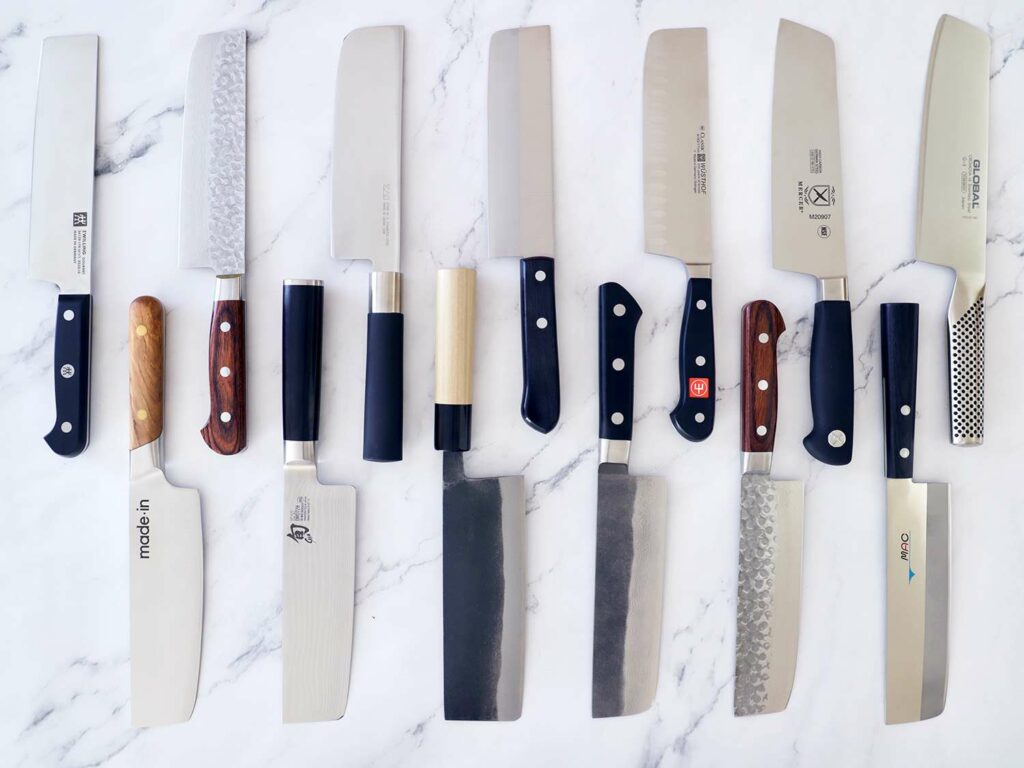
Nakiri is a traditional Japanese vegetable knife. Yet, it has become increasingly popular worldwide due to its exceptional performance and unique design.
The word “Nakiri” comes from the Japanese term “Na” (leaf) and “Kiri” (cut). It refers to its primary function of cutting vegetables.
The blade of the Nakiri is straight and thin, allowing for precise and accurate cuts on vegetables. If you plan to cook Japanese cuisine with a lot of vegetable preparation, a Nakiri would be a great tool in your kitchen.
Overall, the Nakiri is an excellent tool for any cook who regularly works with vegetables and wants a knife that can provide precision, finesse, and ease of use.
What is a Chinese Cleaver?
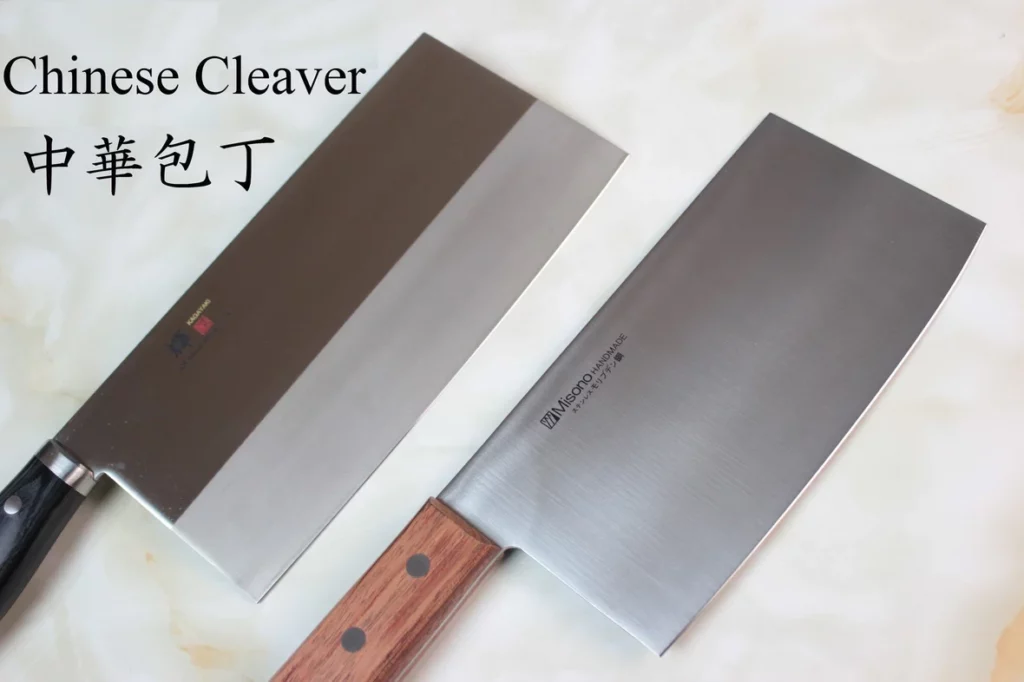
A Chinese cleaver is a versatile and essential tool in Chinese and Asian cuisine. Some people believe the Chinese cleaver has a 4,000-year-long history since its first appearance in the Shang Dynasty.
Manufacturers design the Chinese cleaver for heavy-duty tasks like breaking down meat and poultry.
Its broad blade, sharp edge, and rectangular shape allow for easy scooping and transferring of chopped ingredients.
Overall, the Chinese cleaver is a must-have for those who would like to possess an excellent assistant in their kitchen.
The Difference Between Nakiri and Chinese Cleaver
While a Nakiri and a Chinese cleaver may look similar at first glance, they have their own distinct differences. Let‘s get started!
1. Shape
You can mistake a Nakiri for a Chinese cleaver at the very first look. Don’t worry! Let me show you the differences.
The Nakiri has a distinctive rectangular shape with a straight and flat blade. The blade is generally 5-7 inches long with a squared-off tip.
The blade’s spine is often thicker towards the handle and thins out towards the edge, allowing precise cuts.
The Chinese cleaver is also rectangular but has a broader blade ranging from 6 to 9 inches. The tip of the Chinese cleaver is straight rather than slightly curved.
Besides, the Chinese cleaver is much taller than the Nakiri. So your hand will be higher above the cutting board than when using a Nakiri.
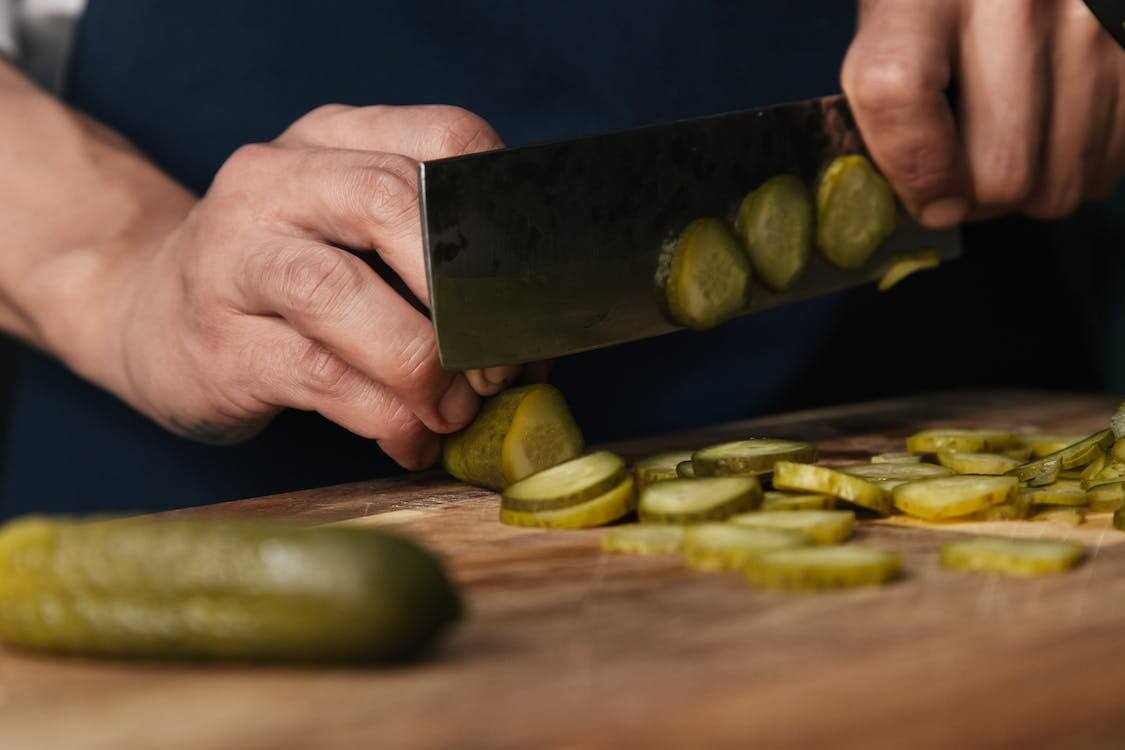
2. Thickness
The thickness of a Nakiri can vary depending on the specific brand and model. Typically, Nakiri has a relatively thin blade compared to other types of knives.
A Nakiri with a double-edged blade is usually between 0.06 inches and 0.10 inches thick, allowing for precise cuts when slicing vegetables.
In contrast, a Chinese cleaver has a thicker blade than a Nakiri and other types of knives. Its thickness can range from approximately 0.07 to 0.31 inches.
The thicker blade of a Chinese cleaver can also make it easier to scoop up ingredients and transfer them to a pan or dish while cooking.
Additionally, manufacturers specially design a Nakiri with a sharp edge to make precise and clean cuts when slicing through vegetables. It is usually sharpened down to a very fine angle of approximately 15-17 degrees.
On the other hand, manufacturers sharpen a Chinese cleaver to a 25-degree angle on each side. This design allows them to make clean cuts. Plus, it provides the necessary durability to withstand frequent use in the kitchen.
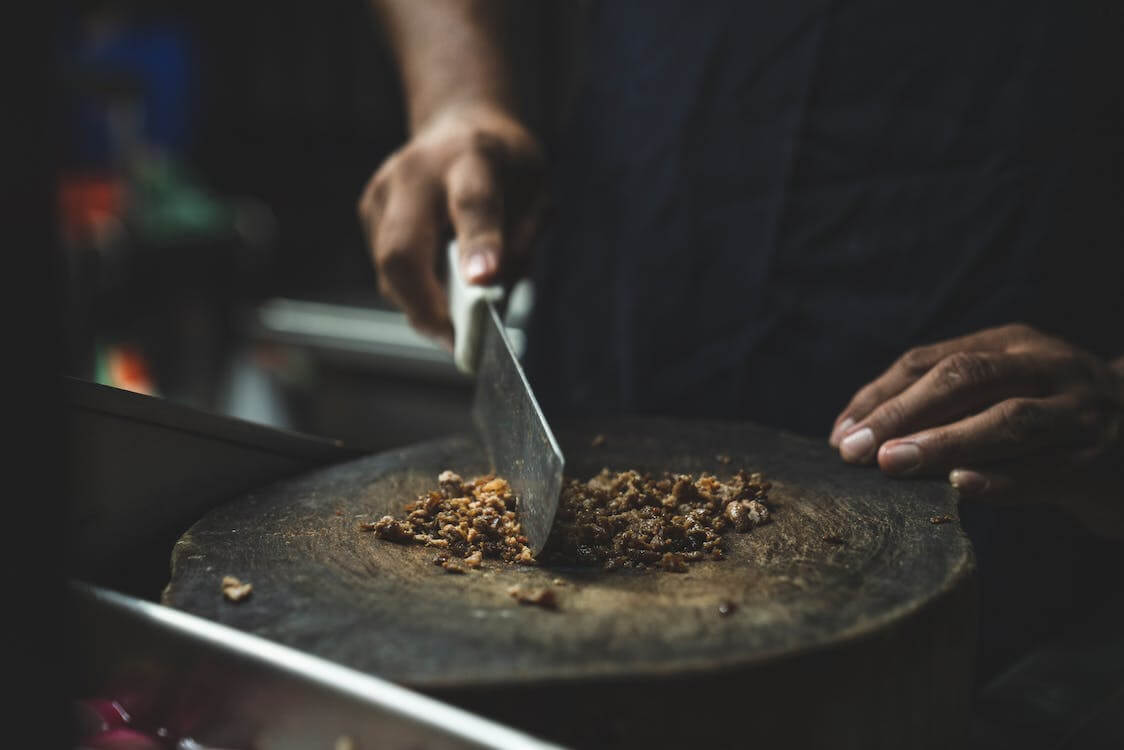
3. Material
Manufacturers often use high-carbon steel to make a Nakiri to enhance its durability and resist corrosion.
High-carbon steel can also hold a sharper edge for a longer time, making it a popular choice among professional chefs.
On the other hand, the raw material of a Chinese cleaver is carbon steel. Yet, carbon steel can be prone to rust and staining. Therefore, some modern Chinese cleavers may be made from stainless steel to combat these issues.
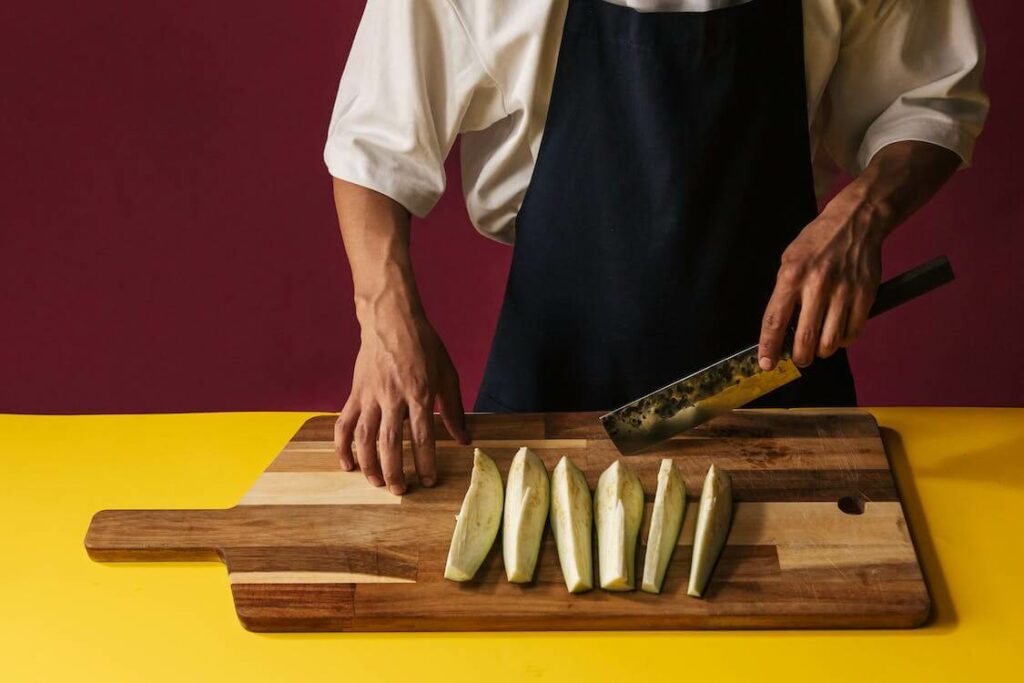
4. Handle Form
The Nakiri handle follows the Japanese style. In other words, it is an octagonal handle. An octagonal handle has eight sides instead of the more traditional round or oval-shaped handles. The edges of the handle provide a more textured surface. It can help prevent slippage and increase control during use.
Manufacturers often use wood to make the nakiri’s handle because it is lightweight and comfortable.
Additionally, the shape of the octagonal handle can help distribute pressure more evenly across the user’s palm, reducing hand fatigue during extended use.
In contrast, the Chinese cleaver typically has a heavier rounded handle. The handle material can be wood, plastic, or composite materials.
The handle is often thicker and bulkier than the Nakiri, providing a firmer grip for the user.
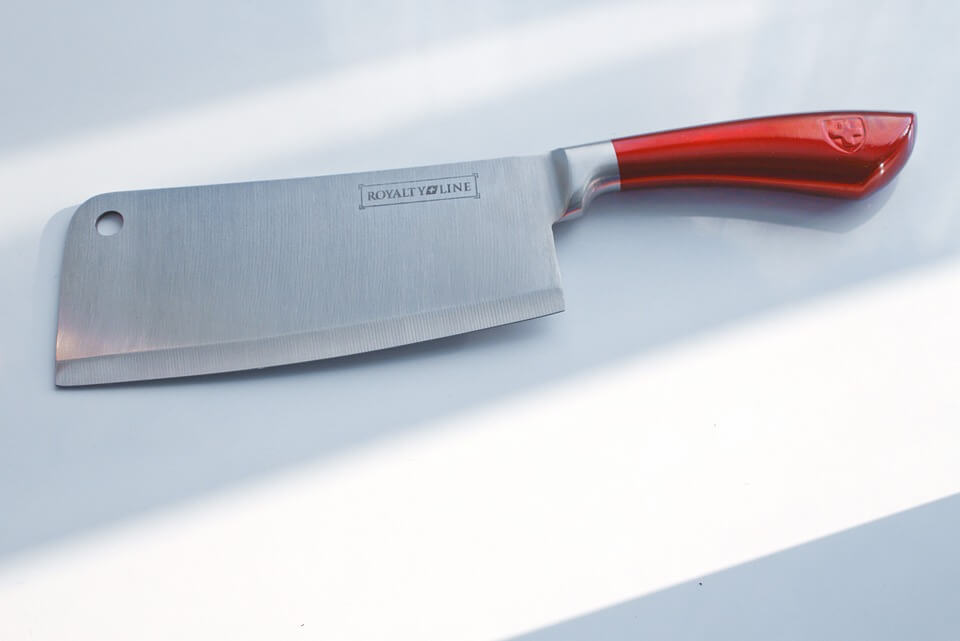
5. Function
Some models of Nakiri may have a single beveled edge. This type of blade would require chefs to choose between a right-handed or left-handed model.
So, they are more effective for slicing and dicing tasks rather than mincing and chopping. Yet, now you can easily find a Nakiri with a double-beveled edge.
In general, the design of Nakiri focuses on coping with vegetable-related tasks. It is excellent at chopping, dicing, and slicing vegetables.
The Nakiri has a thin, straight blade. This design allows for precise and accurate cuts. It is essential when you have to prepare large quantities of vegetables.
Conversely, a cleaver’s design suits heavy materials such as meat, bones, and cartilage. The blade of a cleaver is thick and heavy. Therefore, it can handle tough cutting tasks that would be difficult or impossible with a thinner knife.
Additionally, the weight of the cleaver can provide more force when chopping or slicing. It can be helpful when working with dense or hard materials like bones.
The broad shape of the blade also makes it easier to move large pieces of meat or other ingredients from the cutting board to a pan or bowl.
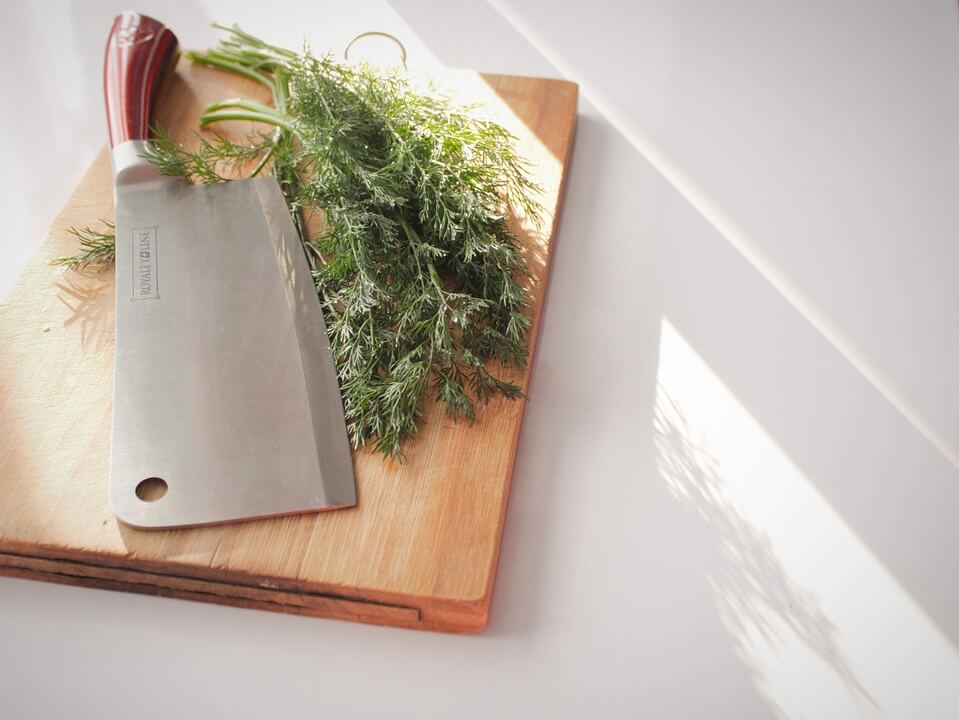
Comparison Table
|
Nakiri |
Chinese cleaver | |
|---|---|---|
|
Blade Length |
5-7 inches |
6-9 inches |
|
Blade Thickness |
0.06 to 0.10 inches |
0.07 to 0.31 inches |
|
Blade Material |
High-carbon steel |
Carbon or stainless steel |
|
Handle form |
Octagonal handle |
Rounded handle |
|
Handle material |
Usually wood |
Wood, plastic, or composite materials |
|
Function |
Ideal for vegetables |
Larger vegetable, meat, bones, and cartilage |
Which Should You Choose?
When deciding between a Nakiri and a Chinese cleaver, remember to consider your specific needs and preferences in the kitchen.
A Nakiri is suitable for slicing, dicing, and chopping vegetables precisely and efficiently. Thanks to its lightweight and easy-to-handle characteristics, a Nakiri is a popular choice for professional chefs and home cooks.
Alternatively, a Chinese cleaver can handle multi tasks like chopping vegetables and meats. With a broader and thicker blade than a Nakiri, it is ideal for chopping through bones and tougher cuts of meat.
If you primarily work with vegetables and want a knife specifically designed for precise vegetable work, a Nakiri is better for you.
If you need a knife that can handle a wider range of tasks, including chopping through tougher cuts of meat and bones, a Chinese cleaver would suit you more.
Ultimately, the decision between a Nakiri and a Chinese cleaver comes down to your specific needs and preferences in the kitchen.
Consider the types of tasks you perform frequently, the weight and size of the knife you feel comfortable using, and your budget when making your decision.
In a Nutshell
In conclusion, both Nakiri and Chinese cleaver are excellent tools for vegetable preparation, but they have distinct differences in design and functionality.
Nakiri is ideal for precise, delicate cuts, while Chinese cleavers are better suited for larger, tougher vegetables. Ultimately, it all depends on your specific needs and preferences.
If you need a knife that can handle various tasks, a Chinese cleaver may be the way to go. But if you’re looking for a knife to make precise, beautiful cuts for presentation purposes, a Nakiri may be the better option.
Hopefully, this article can help you choose the suitable one for you!

